- Gorgeous interior
- Generous standard equipment
- High tech engine which bends the laws of physics
- Steep asking price
- Engine not that fuel efficient
- Stiff ride
Every once in a while a car comes along which headlines some sort of breakthrough feature. Here at DiscoverAuto, we are privileged to be able to test some of the latest tech on offer in the industry and we jumped at the occasion to drive the 2020 Mazda 3 X20 Astina SkyActiv-X, having just driven the fresh off the boat CX-30 with the same engine.
This was not just any other Mazda 3 which we drove. This is, in fact, the world’s first mass produced petrol-powered engine which ignites its fuel using high pressure to generate its power, much like a diesel engine. On paper the highly complicated SkyActiv-X engine is nothing short of a modern marvel, which Mazda says is primed to deliver on its promises of impeccable real-world fuel consumption, whilst continuing to provide a serene driving experience through low noise and effortless performance.
Mazda claims that this is the future of the Japanese brand. Join us as we dive deep into the Mazda 3 itself and its breakthrough SkyActiv-X engine to see whether Mazda’s future is as exciting as it’s hyped up to be.
Price & Specs: 7.5/10
Mazda really pushed this new fourth generation Mazda 3 much further upmarket than ever before, making all new Mazda 3 models rather expensive to begin with. The snazzy all-new SkyActiv-X engine which foreshadows Mazda’s future, is offered in just one single trim level, the Astina, which sits right at the top of the Mazda 3 line-up. As tested, our X20 Astina auto comes in at $41,590 (plus on road costs), $3000 more than a Mazda 3 G25 Astina automatic which is priced from $38,590 (plus on road costs) and comes with the exisiting 2.5-litre ‘G25’ engine. Very surprisingly, Mazda will offer you a manual X20 Astina for $1000 less – thank you!
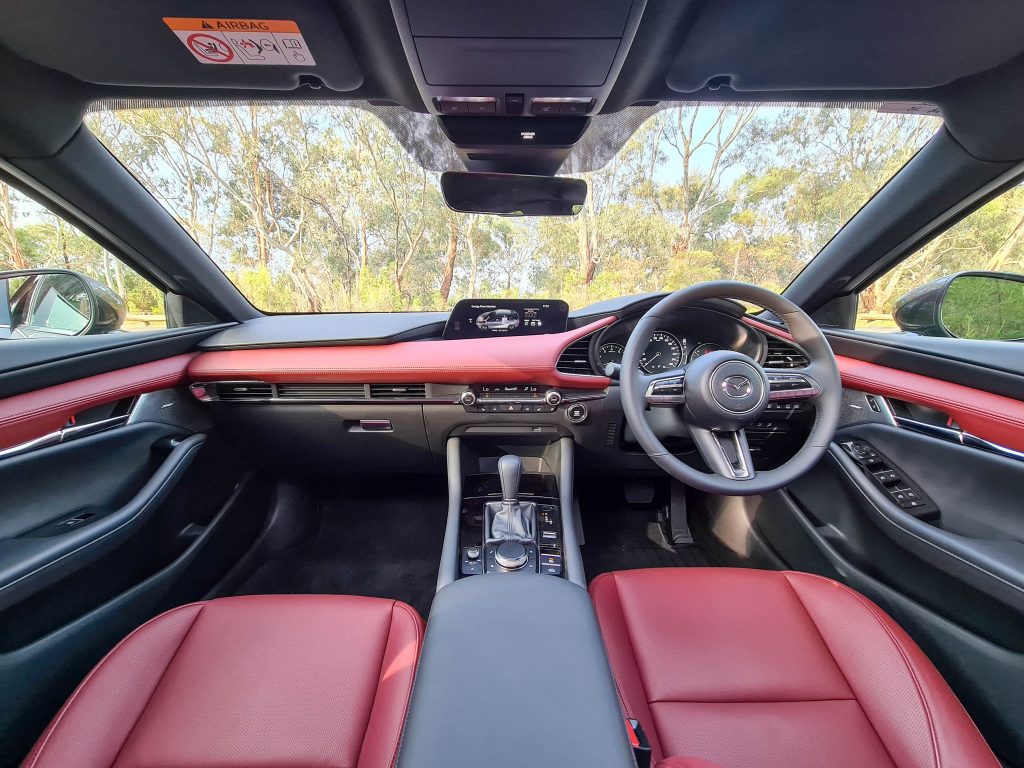
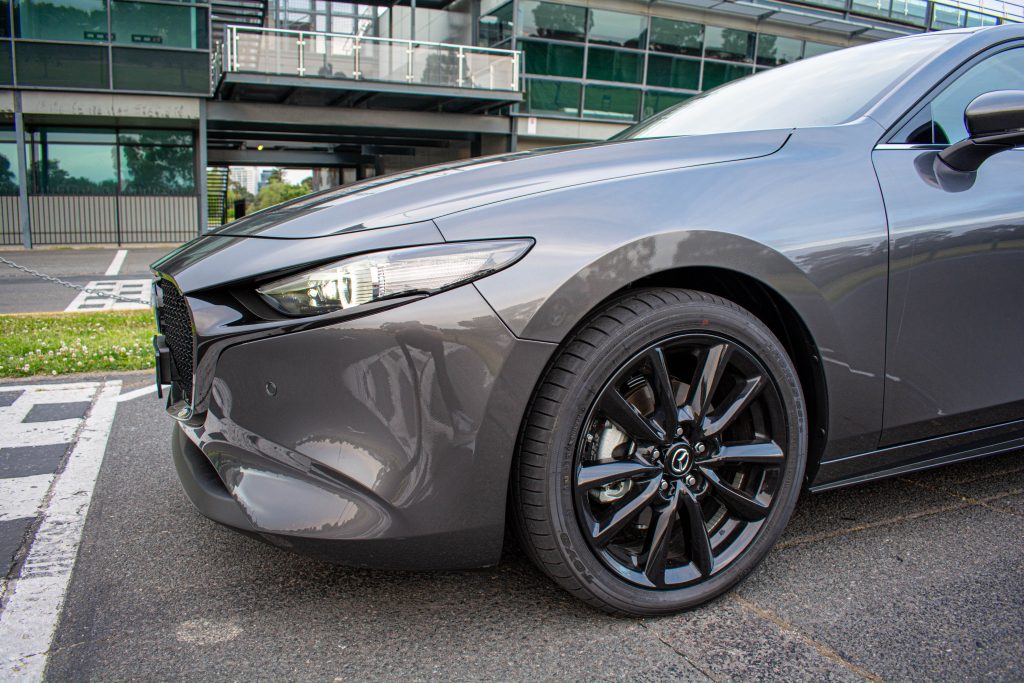
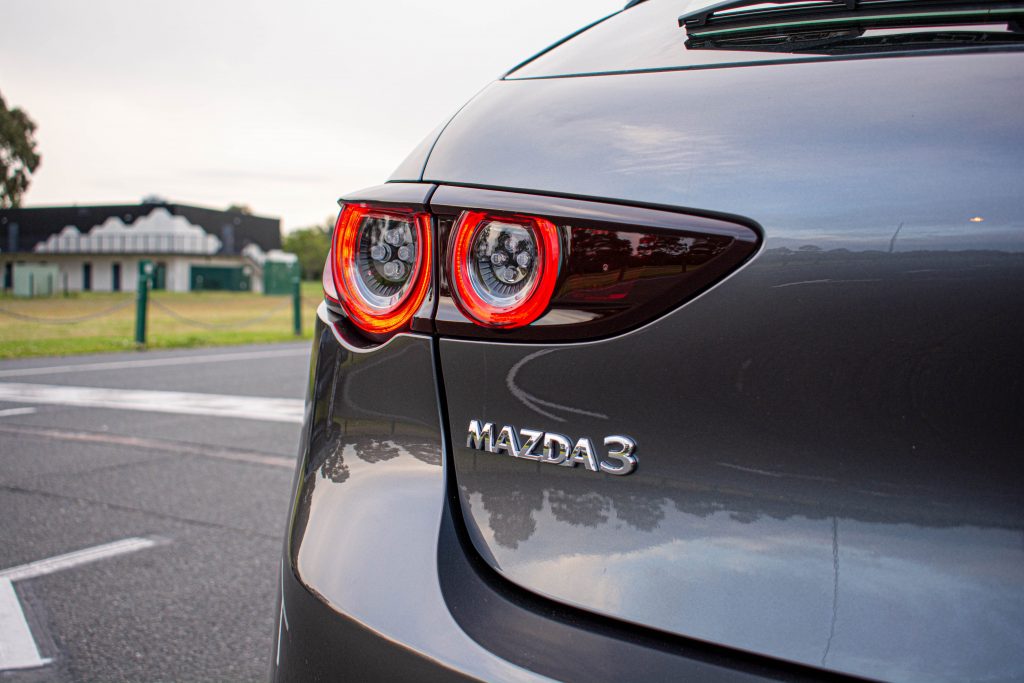
Rivals to the X20 Astina include high-grade hatchbacks such as the Hyundai N-Line Premium at $36,220 Toyota Corolla ZR, $34,490 Ford Focus Titanium, $33,490 Kia Cerato GT (which is the same underneath as the i30) and the $34,990 Volkswagen Golf Highline.
As an Astina, this Mazda 3 is extremely well equipped with pretty much every factory option Mazda could through at the Japanese built hatchback.
For starters, all Astinas roll on 18-inch black alloy wheels with Toyo tyres, have full LED front lighting with Matrix auto high beam, heated/auto-folding mirrors which also dim externally to prevent glare for the driver, whilst inside you’ll find a super crisp 8.8-inch screen mounted high in the dashboard (not a touchscreen) with inbuilt Apple CarPlay and Android Auto support, navigation and digital radio. Our model came with the optional ‘burgundy’ leather which adds a touch of class to the already impressive interior. On the tech front, all Astinas come with a 12-speaker Bose sound system, a heads up display, a sunroof, keyless entry with push button start as well as a clever 360-degree camera which gives drivers a birds eye view of the car. Sadly, wireless charging is nowhere to be found – even though it’s available overseas.
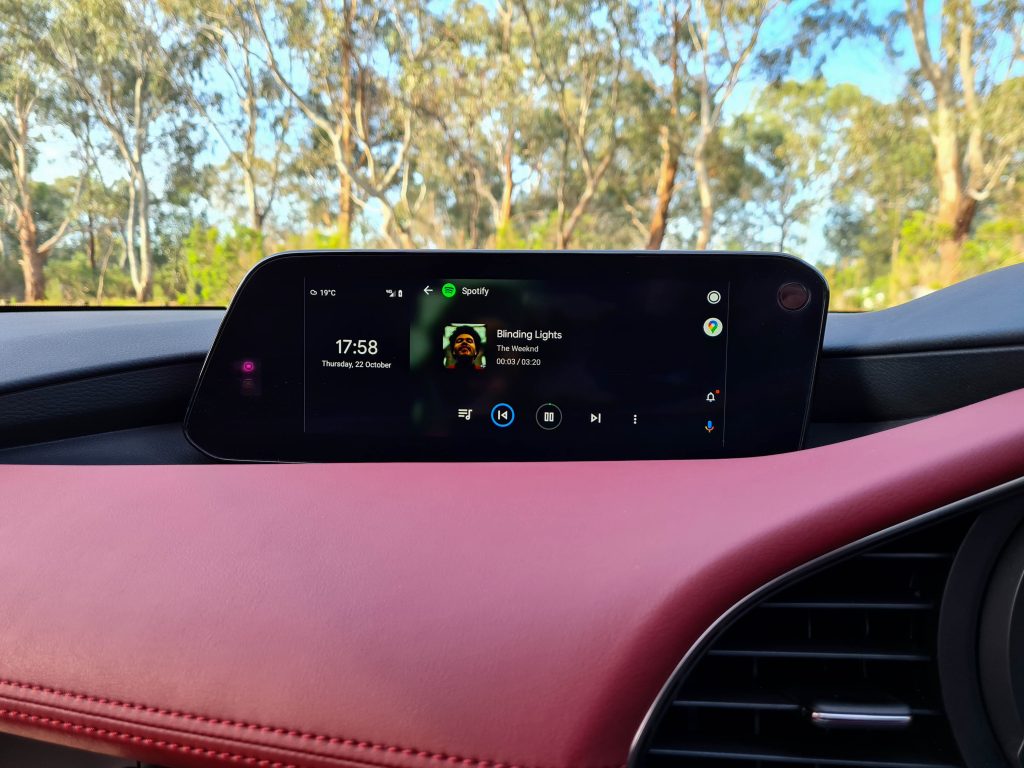
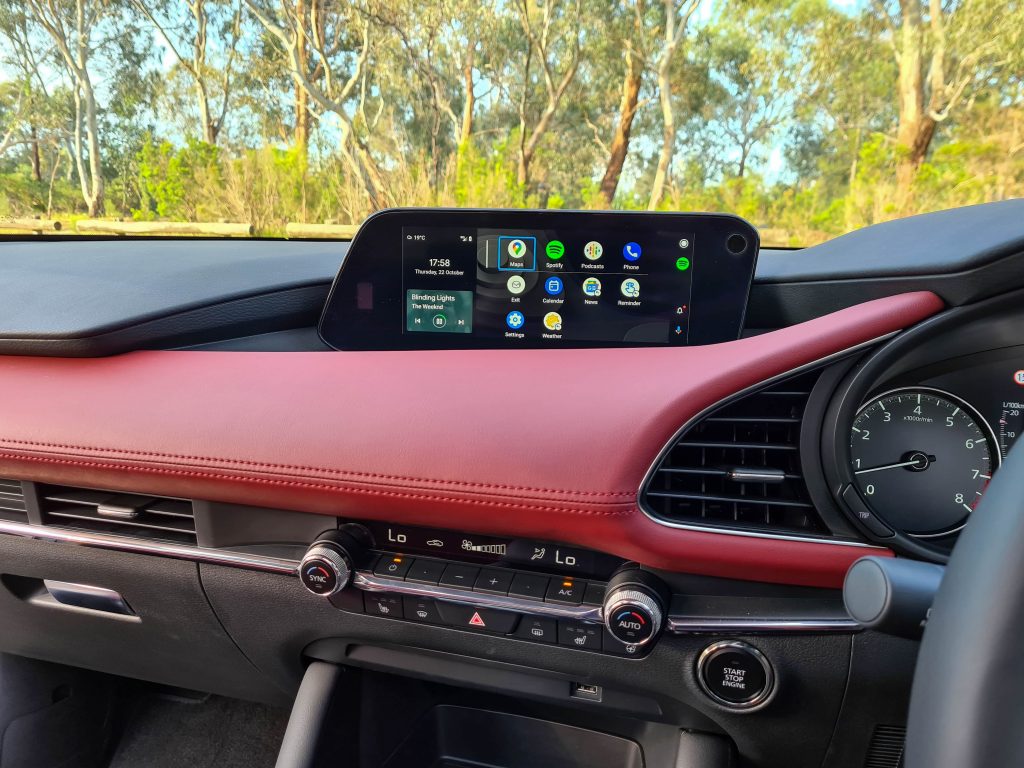
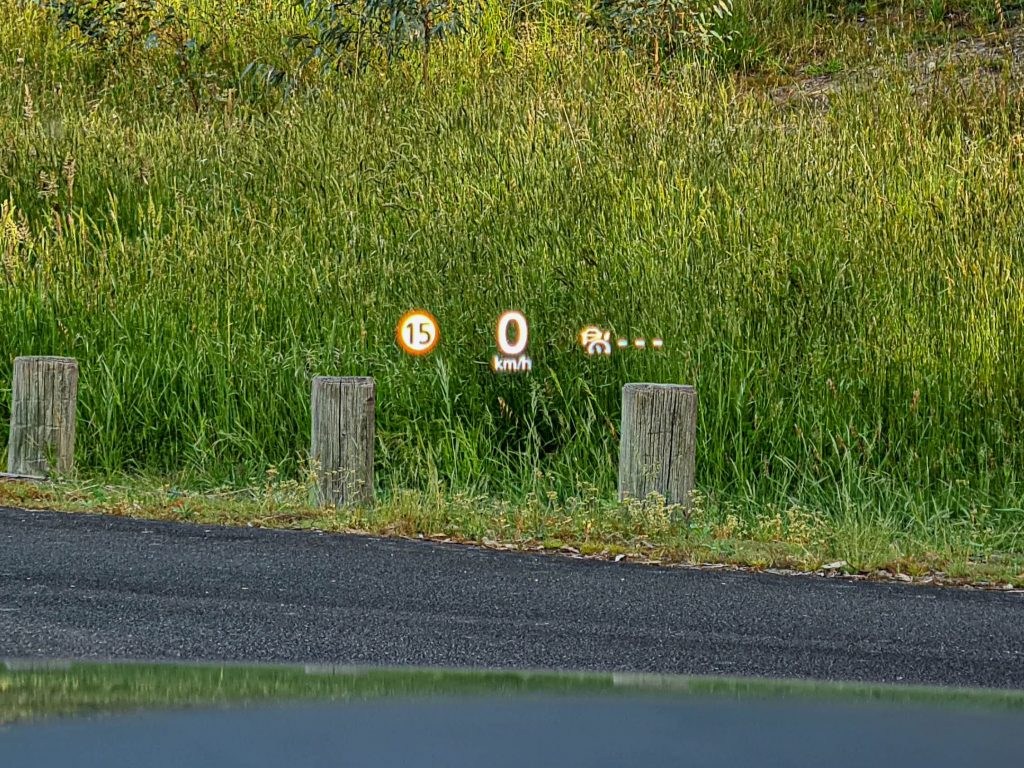
All Mazda 3 models feature seven airbags, and come with a full five-star ANCAP safety rating along with a raft of safety features designed to prevent accidents such as lane keep assist, autonomous emergency braking both front and rear, blind spot monitoring, front and rear cross-traffic alert, adaptive cruise control with stop and go functionality, speed sign recognition and driver fatigue detection.
Performance & Economy: 8.0/10
First things first, the all-new SkyActiv-X engine produces 132kW at 6000rpm and 224Nm at 3000rpm and has an official fuel claim figure of 5.5 litres per 100km when paired with a six-speed automatic, or 5.3L/100km with a manual. On paper at least, the engine appears to match the fuel consumption of a Volkswagen Golf 110TSI which features a 1.4-litre turbocharged engine, bettering an automatic Mazda 3 G25’s official combined fuel consumption by 1L/100km.
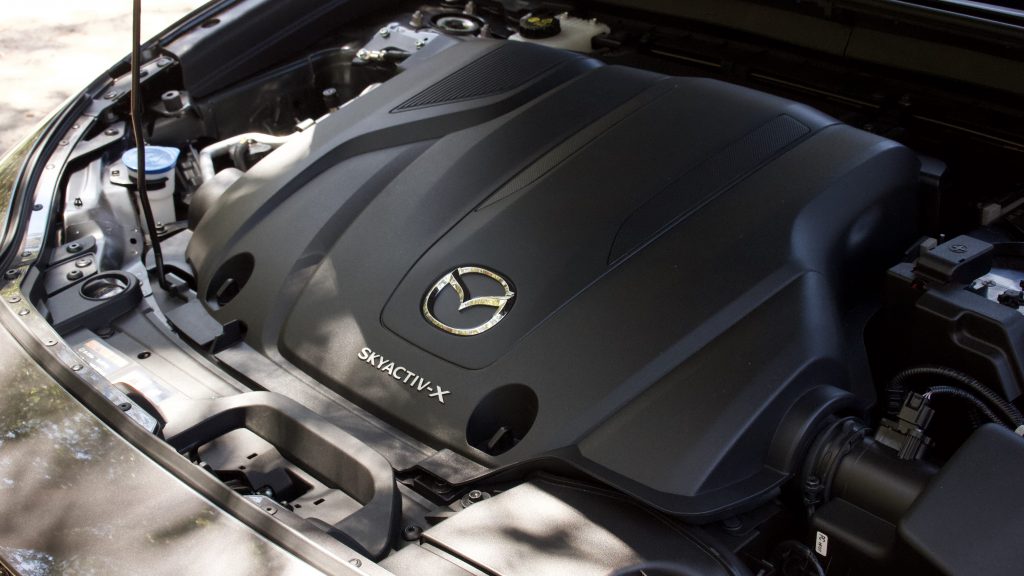
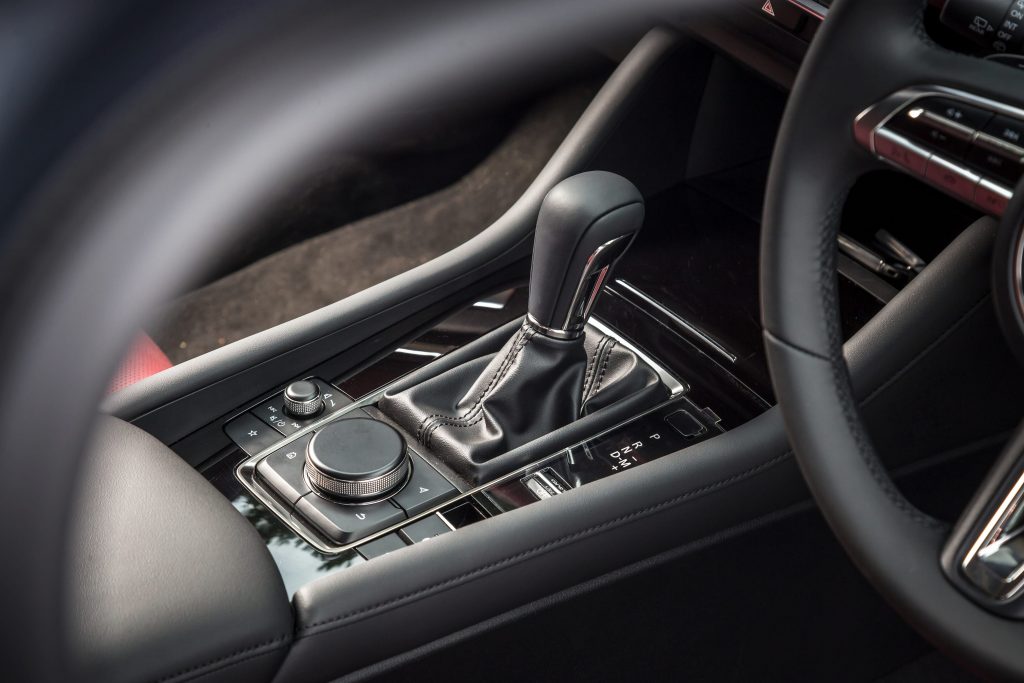
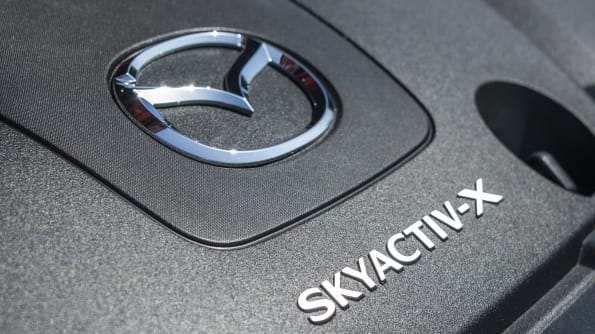
The engine is helped out by a small electric motor which takes the places of a traditional starter motor and boosts the SkyActiv-X engine at crucial moments. Unlike most hybrids such as the Toyota RAV4, or Toyota Corolla that we’ve driven, the Mazda 3 X20 Astina can’t run solely on electric even for the shortest of distances.
So, what is SkyActiv-X technology all about? In a nutshell, it combines the smooth-running, sweet nature of a petrol engine with the incredible efficiency of a diesel engine to achieve a kind of utopia, where the best of both worlds is on offer. Every petrol engine uses a spark plug to ignite its fuel, from your lawn mower, to the most expensive car on sale. In diesel engines however, fuel self ignites under pressure and heat in the engine, eliminating the need for a spark plug. This leads to the entire fuel/air mixture igniting instantly and uniformly, meaning that nothing is wasted.
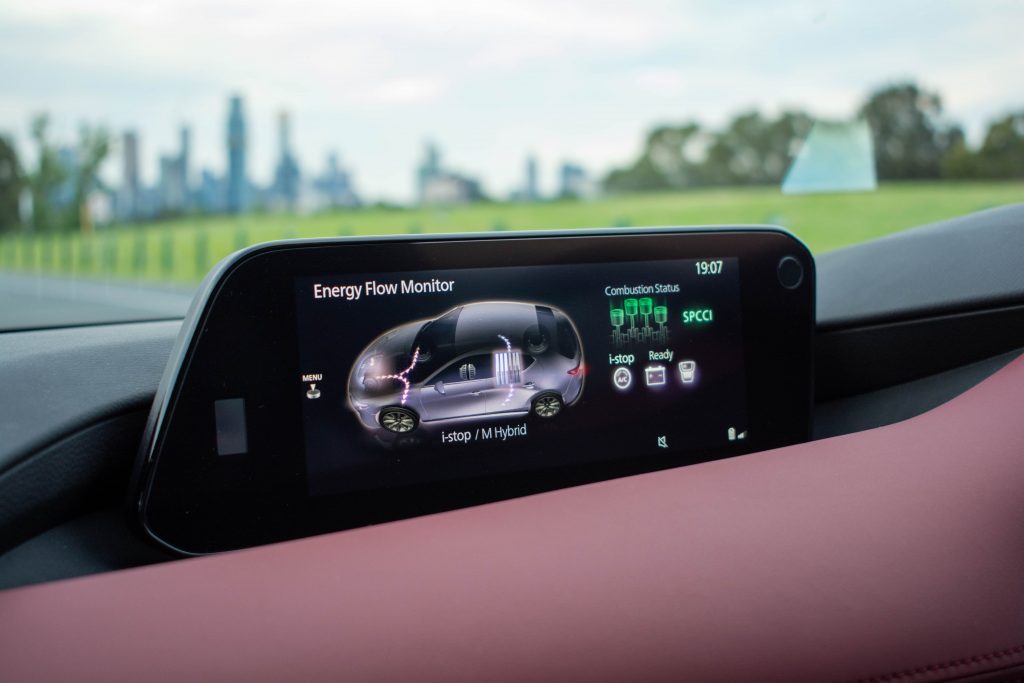
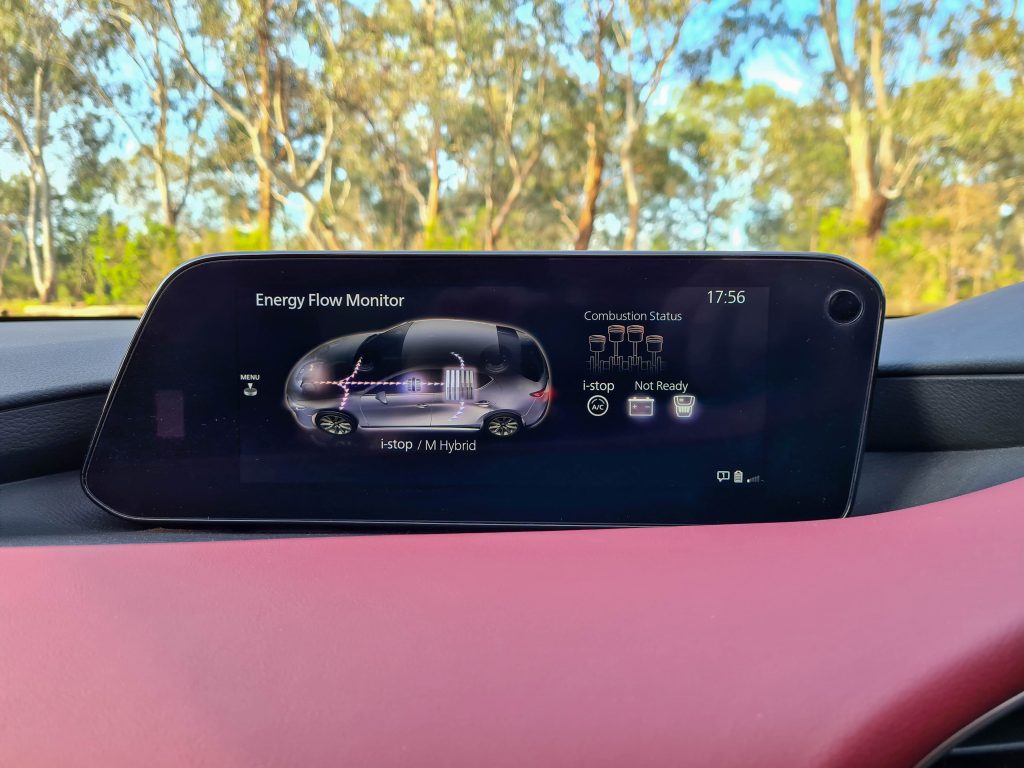
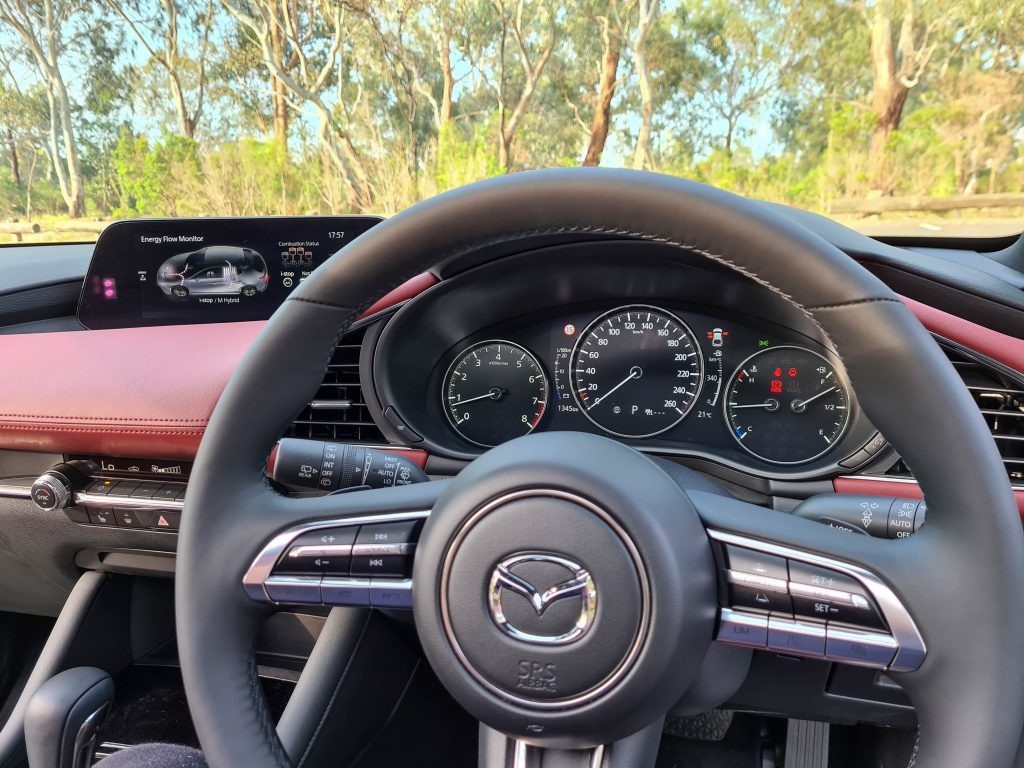
Mazda’s SkyActiv-X tech works by running the engine’s mixture very lean by forcing more air in through a tiny supercharger, prior to compressing the mixture to a level only seen in diesels. The spark plug still has a role here, starting a tiny fireball that allows the entire highly compressed mixture to combust in its entirety. On paper, this leads to more power, and cleaner emissions with no unburnt fuel leaving the engine.
Whilst academically brilliant, the Mazda 3 SkyActiv-X engine unfortunately fails to deliver on its promise of reduced fuel consumption, with our car averaging around 7L/100km in a mixture of urban and freeway driving. This is hardly an amazing result considering that a Corolla Hybrid will easily achieve 5L/100km around town. It’s clear to see that SkyActiv-X technology is still in its infancy and will only keep getting better and better.
Thanks to Mazda’s impeccable engineering around the sound insulation of the engine, there is very little engine noise and vibrations coming from the engine, the engine fires up quickly when at the lights and pulls cleanly all the way to the redline. It is much quieter than the other engines in the Mazda 3 lineup. If it wasn’t for the Spark Controlled Compression Ignition (SPCCI) logo lighting up on the centre screen, the engine would be indistinguishable from a regular petrol engine.
Power and torque also feel decent, if not amazingly abundant. The entire Mazda 3 SkyActiv-X package feels like a decent naturally aspirated engine, rather than a small turbocharged engine we have seen in most new cars. The engine provides hearty mid range torque and the revised six-speed automatic transmission shifts intuitively. An extra two ratios would help with fuel economy without a doubt.
Ride & Handling: 7.0/10
The Mazda 3 has always been one of the better cars to drive in the segment and the trend generally continues with this generation. Riding on 18-inch alloy wheels, the Mazda 3 SkyActiv-X is certainly not as plush as a Golf or Civic. We’re sad to report that it always feels a tad stiff and the suspension never settles down. We suspect that this might be due to Mazda’s choice to opt for a fairly primitive type of rear suspension. There is a single beam connecting the wheels on the rear axle, meaning that if one wheel goes over a bump, the other wheel is affected by it. Mazda opted for this simpler type of suspension over an independent system (that the previous generations featured) to save weight and money and in doing so has negatively affected the Mazda 3’s ride comfort.
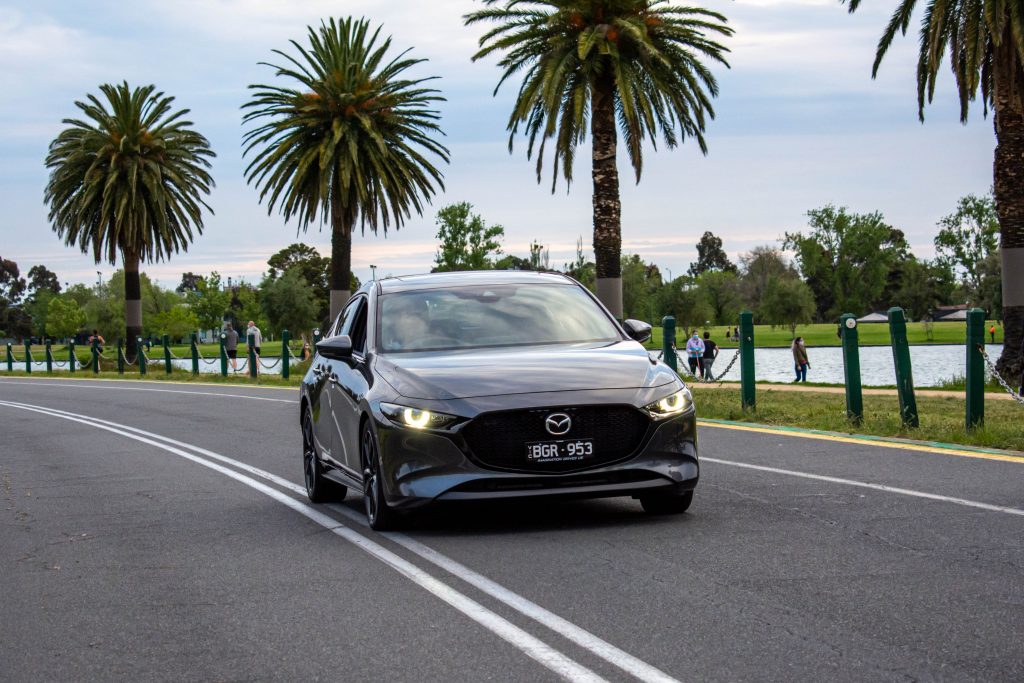
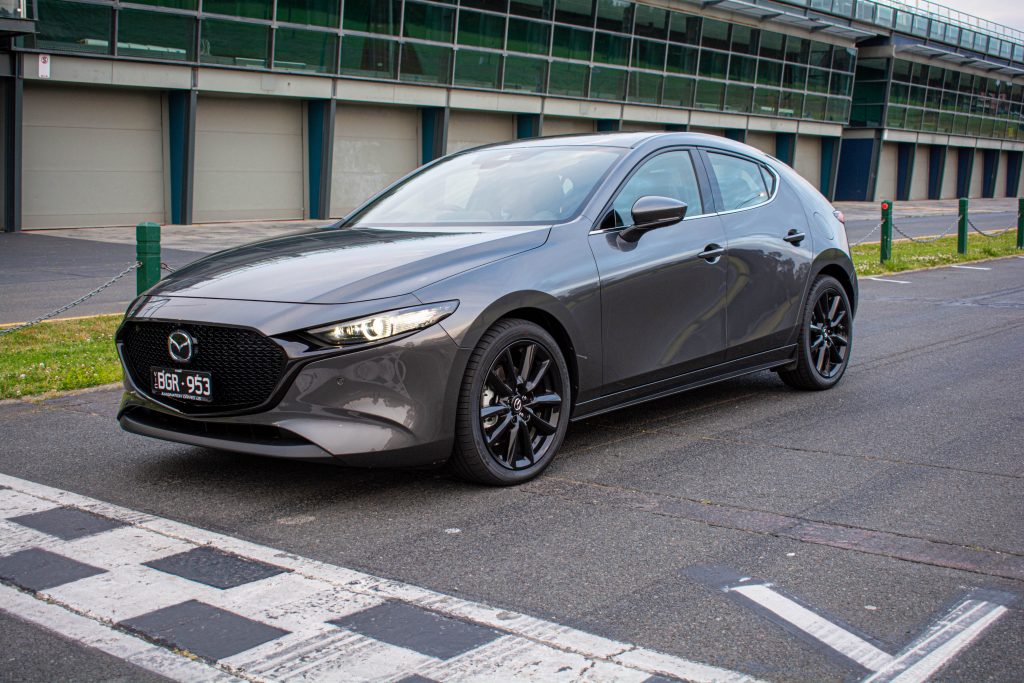
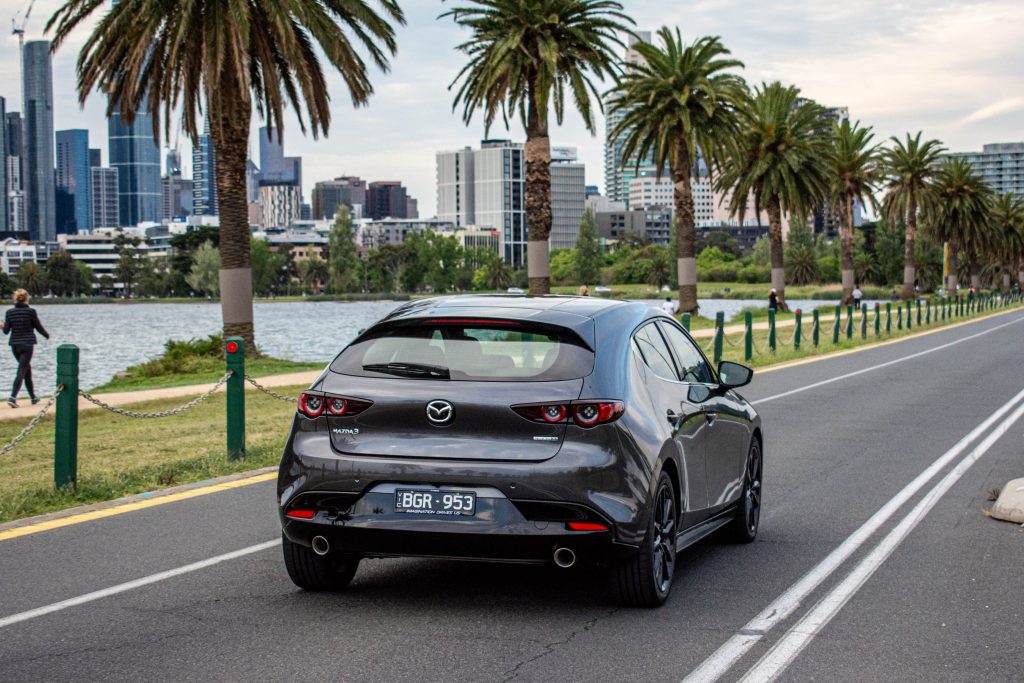
The upside to this firm ride is that the Mazda 3 continues to impress as a driver’s car. The 215mm wide Toyo tyres might lack grip compared to the best on the market, but the Mazda 3 feels well balanced through corners with the steering offering enough feel to tell what the front wheels are doing. Sadly, the brake pedal has an odd wooden feel and takes some getting used to, probably due to the car’s regenerative braking.
The thing which impresses the most about the driving experience is the huge reduction in road noise Mazda has achieved. With countless hours spent on improving sound insulation, door seals and even carpet thicknesses in key areas, the Mazda 3 is one of the quietest cars in the segment to travel in. This makes the Mazda 3 an excellent car for taking into the country on long journeys.
Interior & Practicality: 9.0/10
Without a doubt, the Mazda 3’s interior is the most impressive aspect of the entire car. We’ll go so far as saying that the Mazda 3 has the best interior in the segment and that it is more than good enough to take on some premium cars. It’s that good. The bespoke feel of the cabin is reminiscent of Alfa Romeos. Every touch point inside is soft, beautifully crafted and feels precision made.
With the burgundy interior option, the interior is full of colour and simply gorgeous. The new steering wheel feels perfect in the hand, whilst the seats are some of the best in the business. The driving position is low slung sporty, and can be perfectly adjusted to the driver’s liking.
Mazda’s new 8.8-inch infotainment system is a world away from the MZD-Connect still used in other Mazda models such as the CX-5. It comes standard with Apple CarPlay and Android Auto and the screen itself is very bright and clear. It’s easier to use than MZD-Connect and isn’t a touchscreen. Instead it’s operated by a rotary controller housed on the centre console. Whilst not have a touchscreen is rare these days, the system is actually very intuitive to use and very easy to get used to. The Bose sound system is by far the best in any small car, offering up superb clarity and impressive bass.
A 7.0-inch LCD display sits in front of the driver offering some customisability and displays key trip computer information and is flanked by traditional dials for the tachometer, fuel and temperature gauges.
Where the Mazda 3’s interior starts to lose some ground is in the amount of room it offers. Front seat occupants are well looked after with ample storage for small items and large bottle holders in the doors. Rear seat legroom and headroom are however limited due to the car’s coupe-like shape. Rear seat occupants wont be as happy in here as in a Kia Cerato. Back seat passengers will however appreciate the centre armrest, and rear seat air vents – though charging ports and a second map pocket would be appreciated.
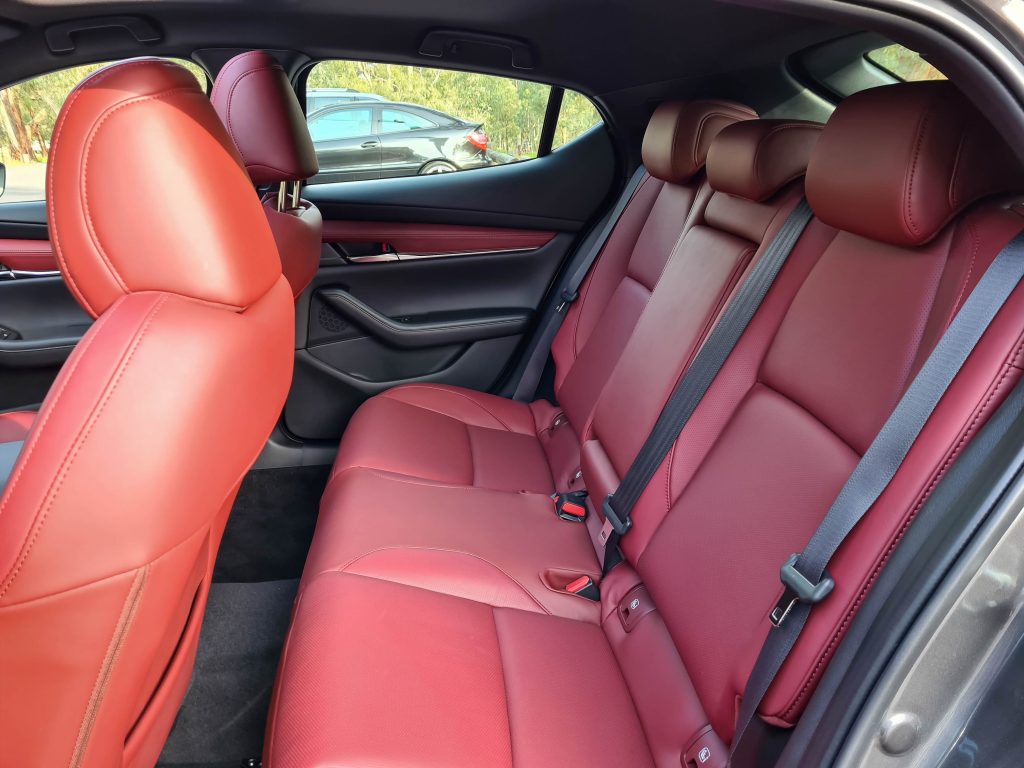
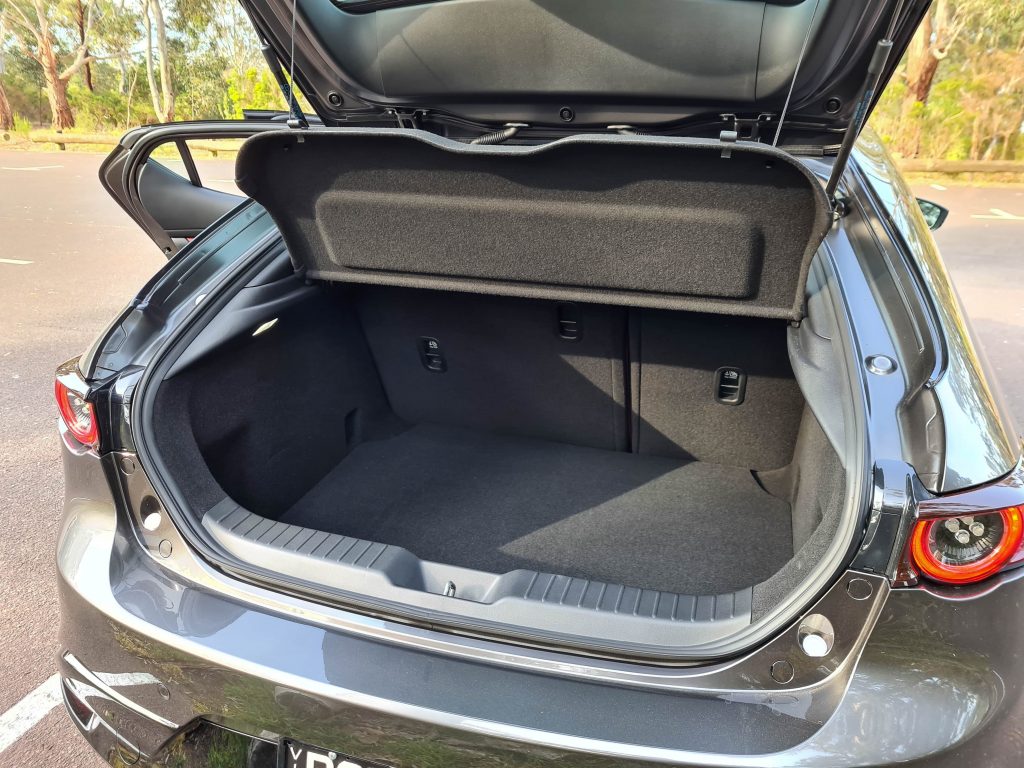
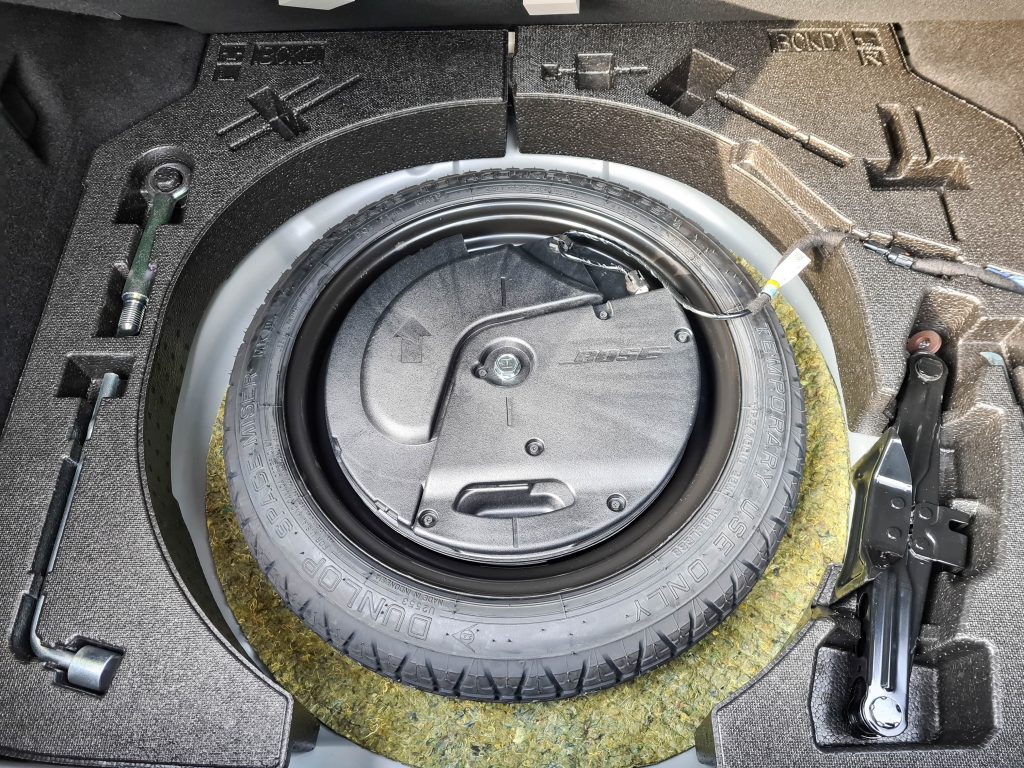
The boot is sadly one of the smallest in the class, coming in at only 295-litres, though it is bigger than you’d expect in person. Only a Toyota Corolla offers a smaller boot in the segment at just 217L. Such is the price paid for the Mazda 3’s sporty looks.
Running Costs & Warranty: 7.0/10
All Mazdas come with a five-year, unlimited kilometre warranty with service intervals occurring every 12 months or 10,000km, whichever comes first. It is disappointing to see that Mazdas still need to be taken in for a service every 10,000km instead of the industry standard of 15,000. Over a five-year period, the Mazda 3 SkyActiv-X will cost $2,052 with each year’s service costing around $410 on average.
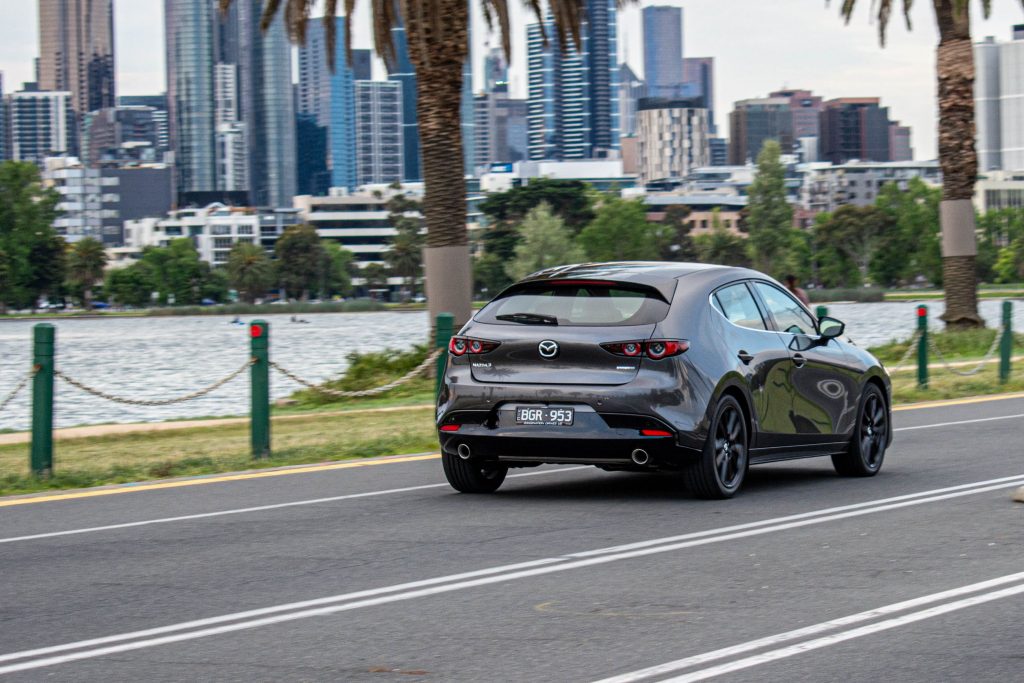
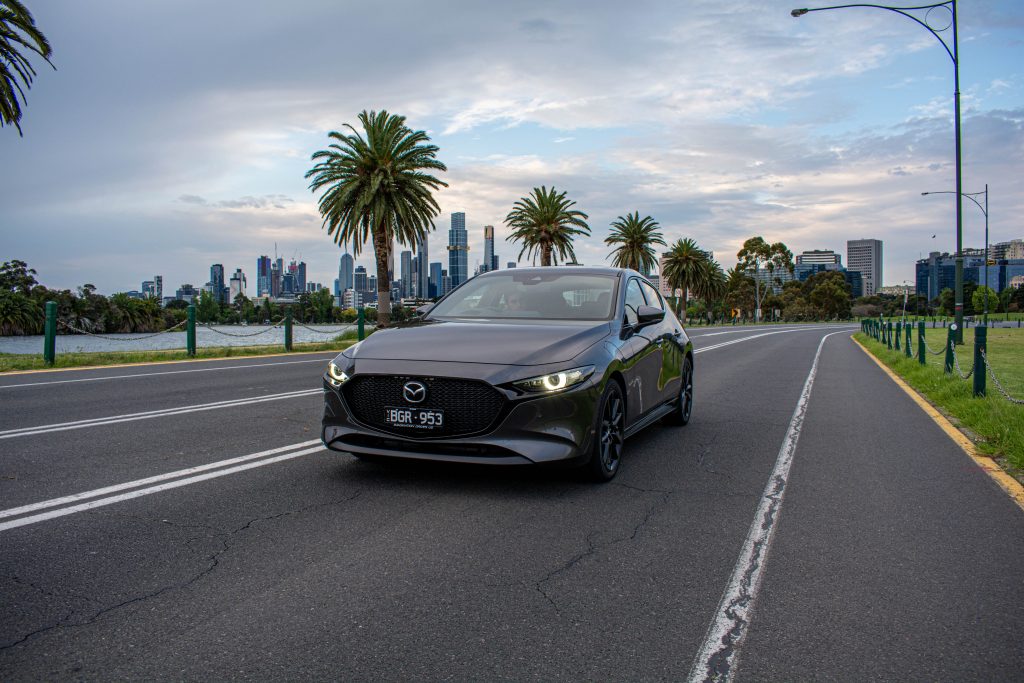
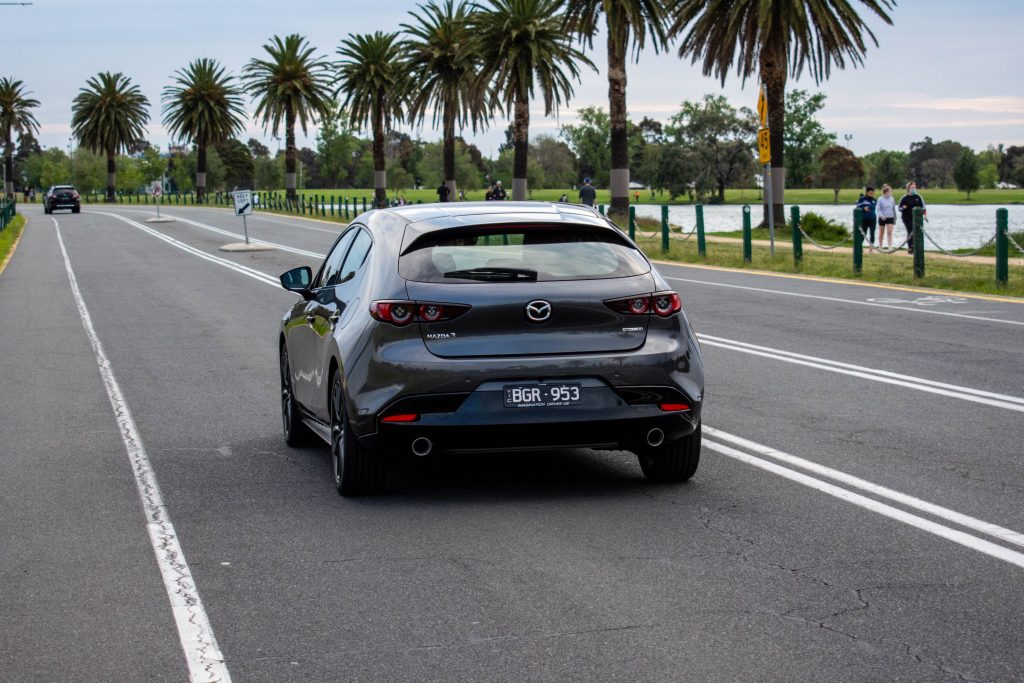
A Toyota Corolla costs a paltry $900 over five years to service with each service only costing an average of $180 each. The Mazda 3 SkyActiv-X is certainly not one of the cheapest cars in the segment and is hampered by its inability save a great deal of fuel over other Mazda 3 models, meaning that the $3000 premium paid over a ‘G25 Astina’ is hard to justify.
2020 Mazda 3 SkyActiv-X DiscoverAuto Rating: 7.7/10
The Mazda 3 X20 Astina SkyActiv-X impressed us with its supremely quiet ride, its plush interior and impeccable standard equipment list. There was no mistaking that this was a throughly accomplished small car. Yet we were left intrigued about the SkyActiv-X’s merits. On one hand, we were left fascinated by what was happening under the bonnet, along with how normal the entire drivetrain felt. Unfortunately, we were equally disappointed that the fuel consumption on test was nothing special.
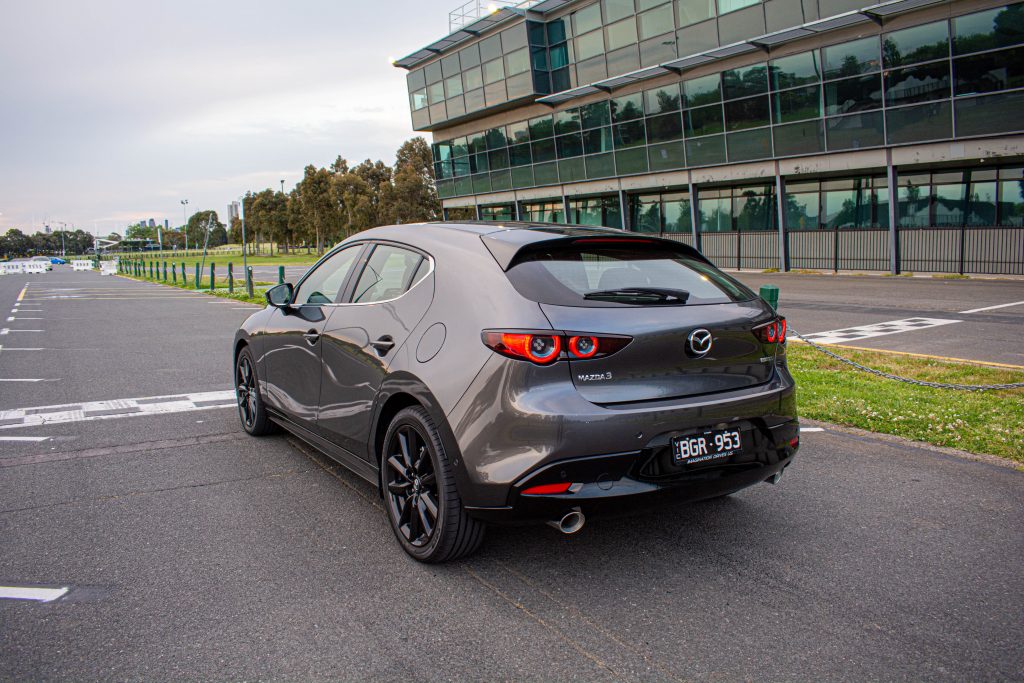
We must however congratulate Mazda on pushing the limits on what is achievable with a petrol engine. For early adopters of the latest tech, the Skyactiv-X engine makes a lot of sense. For most however, the technology is best observed from afar, offering a glimpse into what Mazda’s future holds.
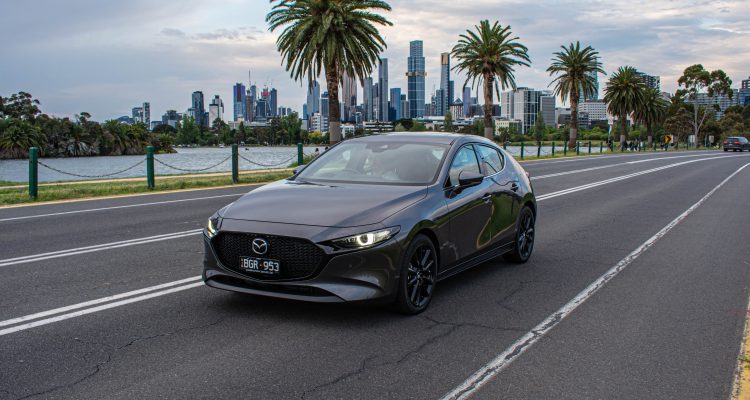
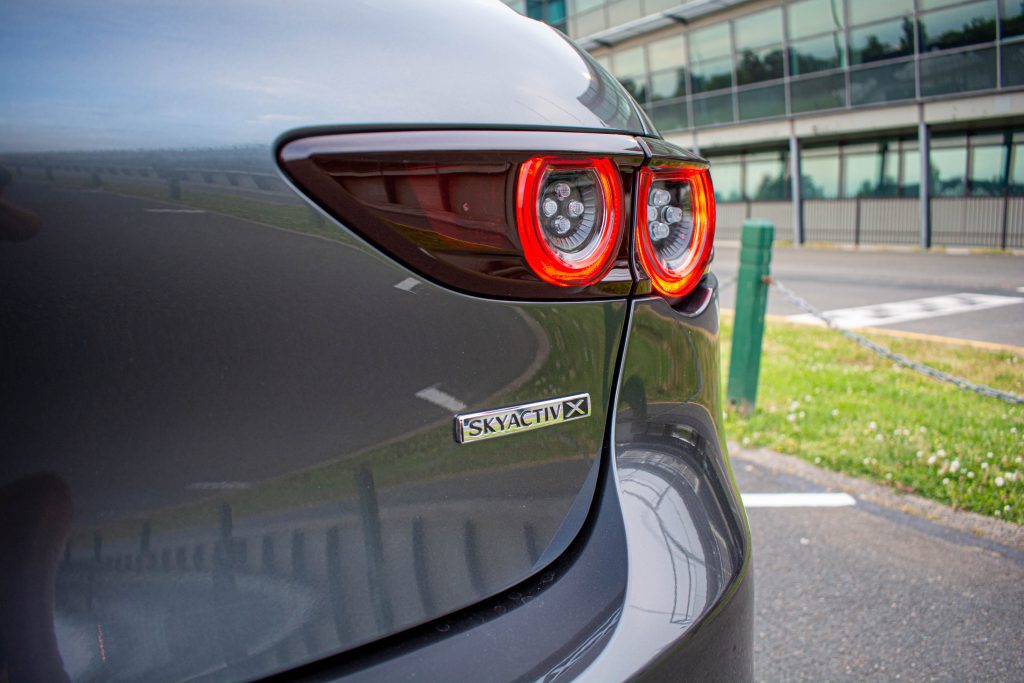
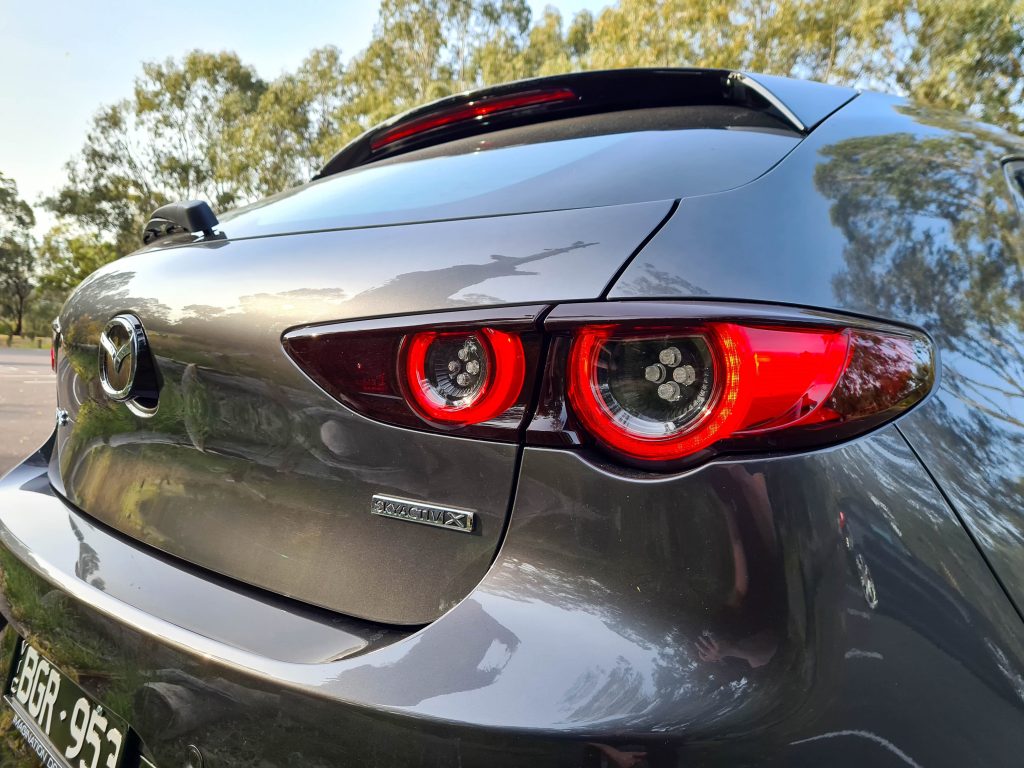
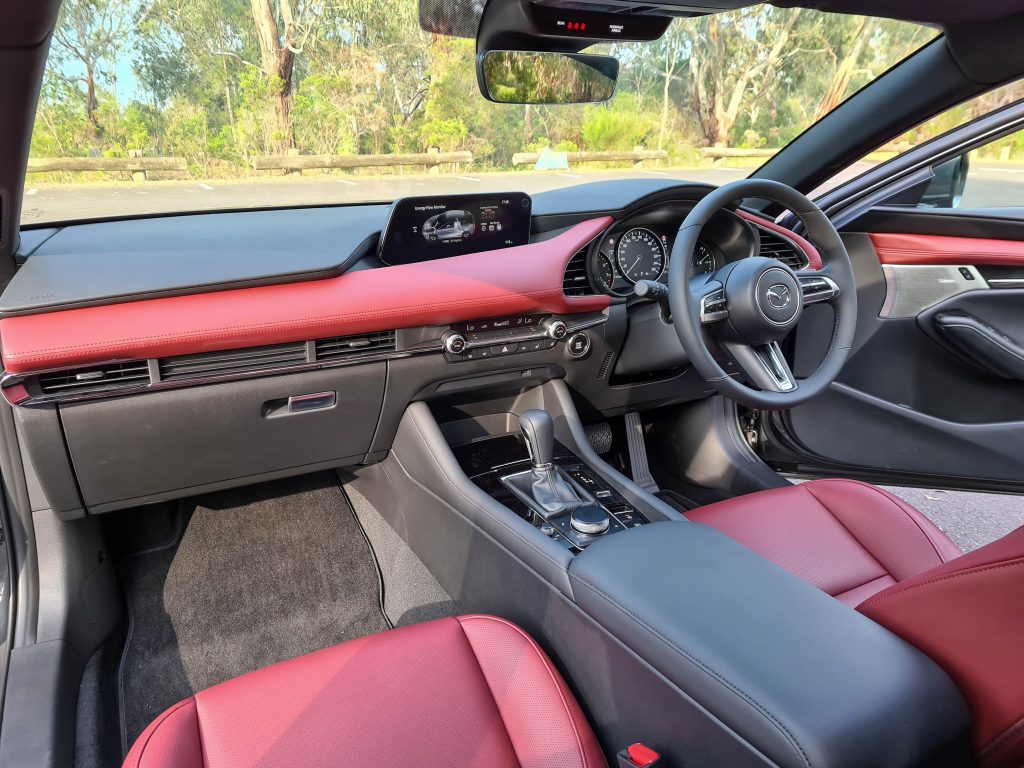
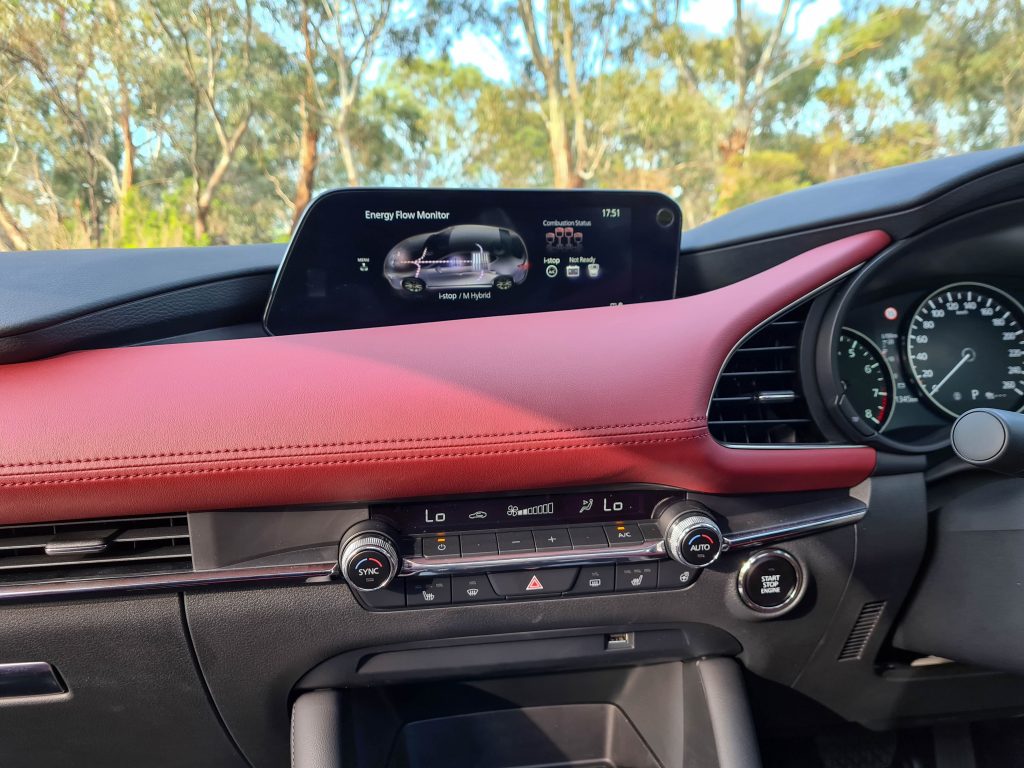
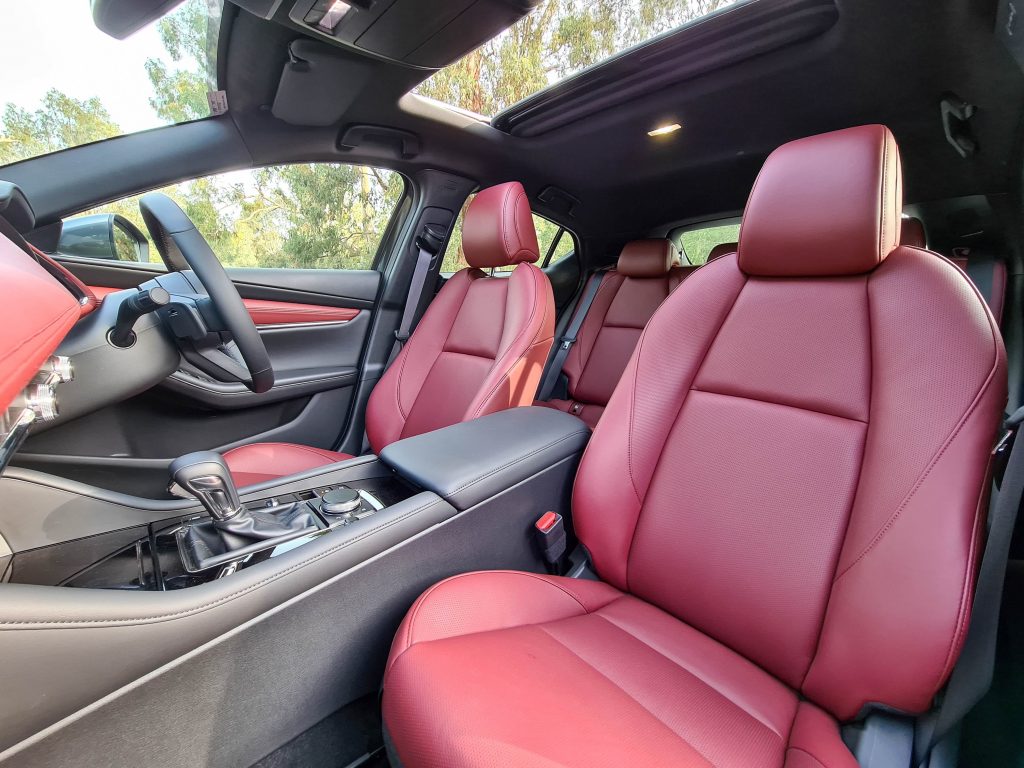
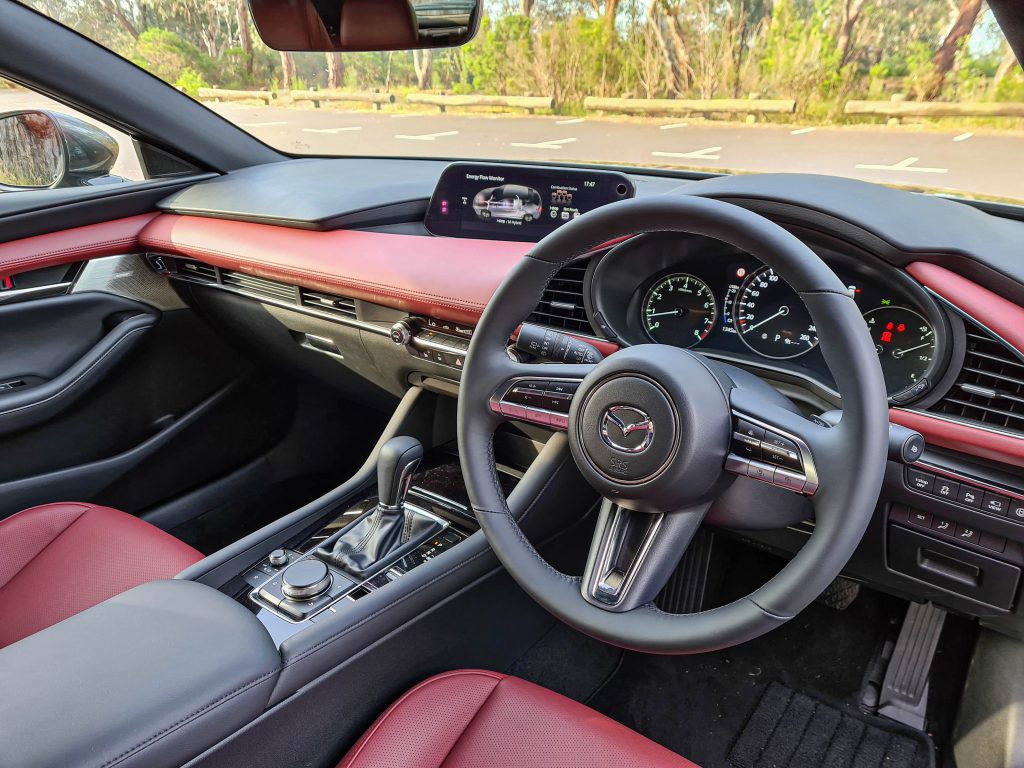
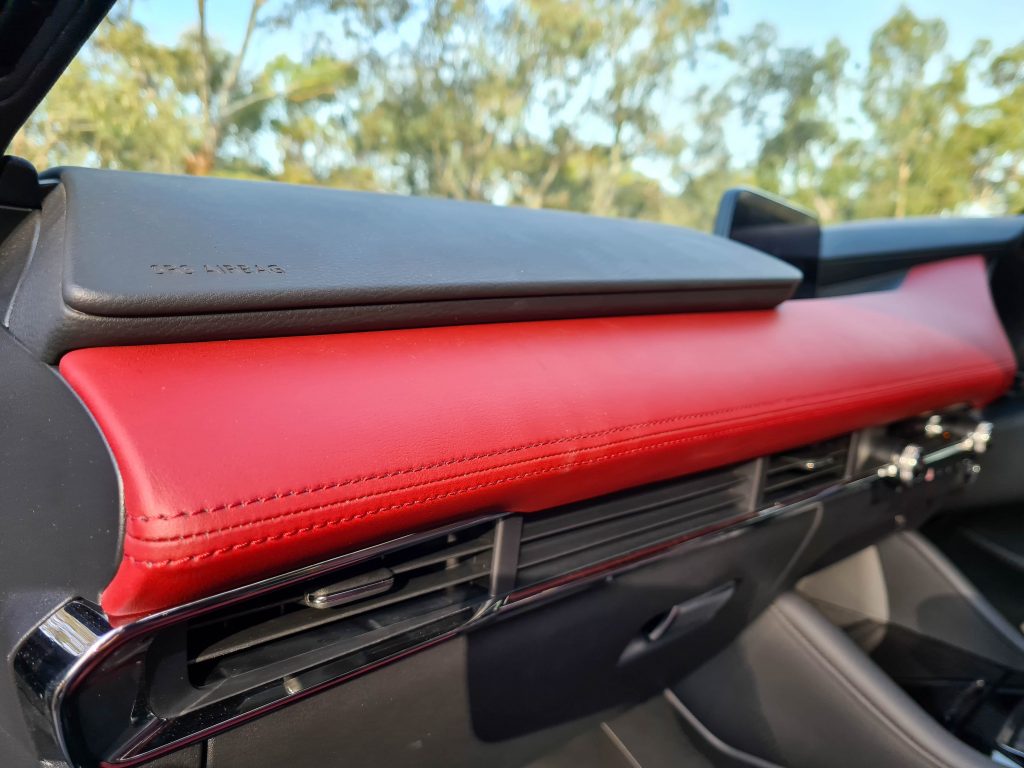
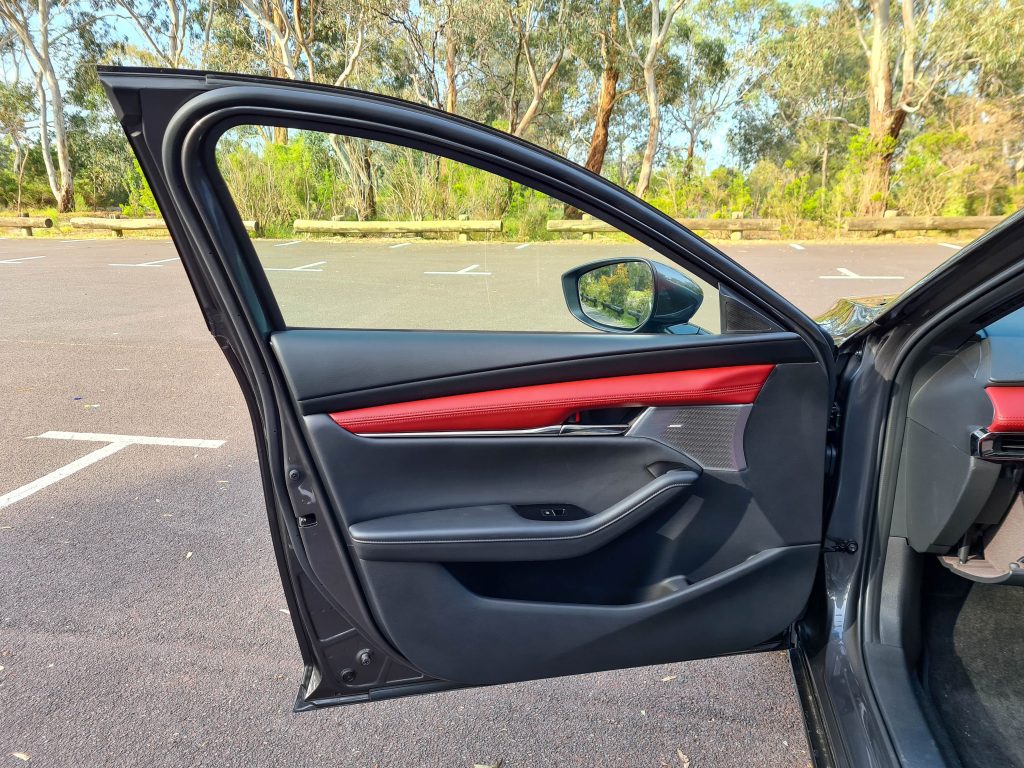
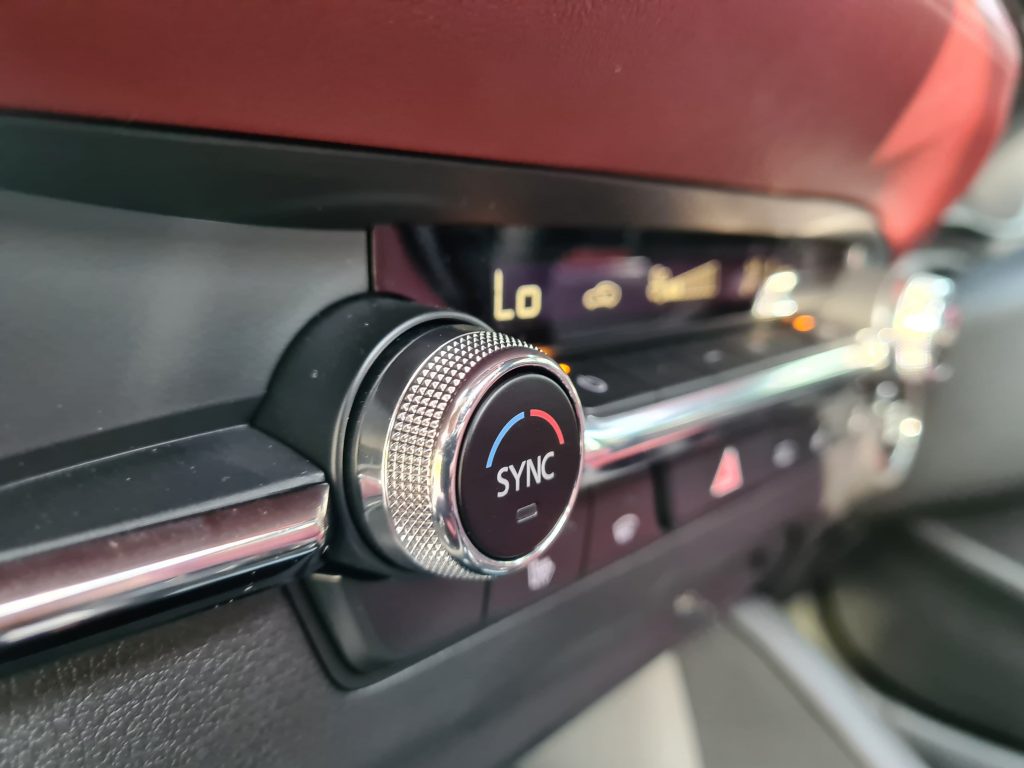
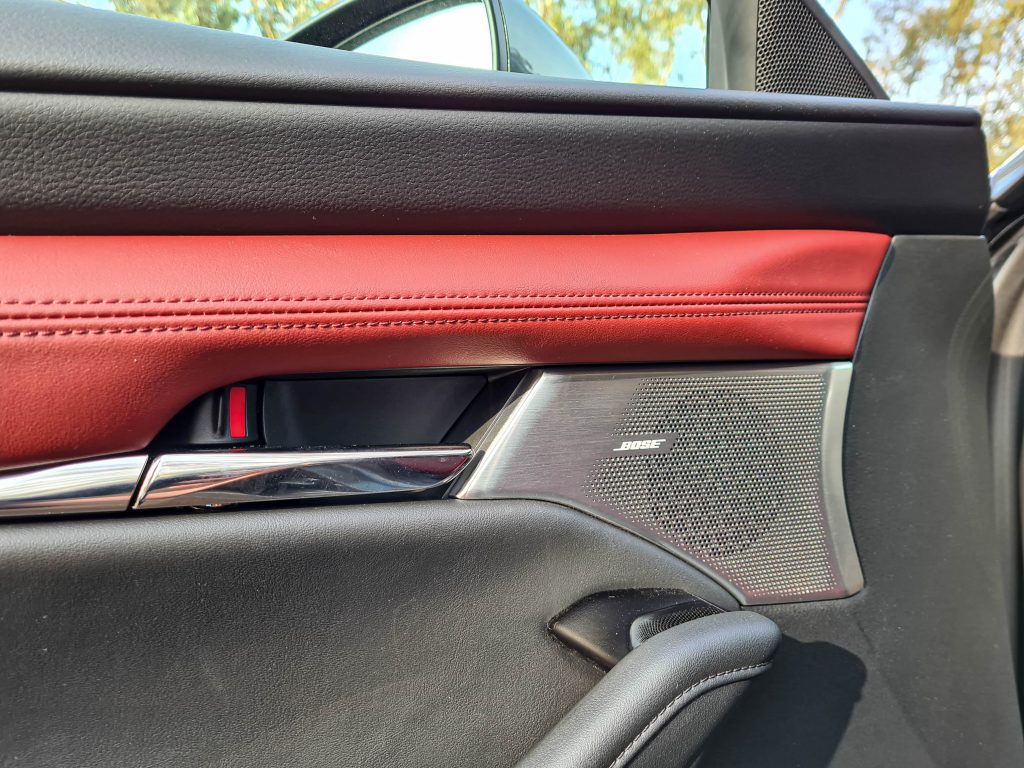
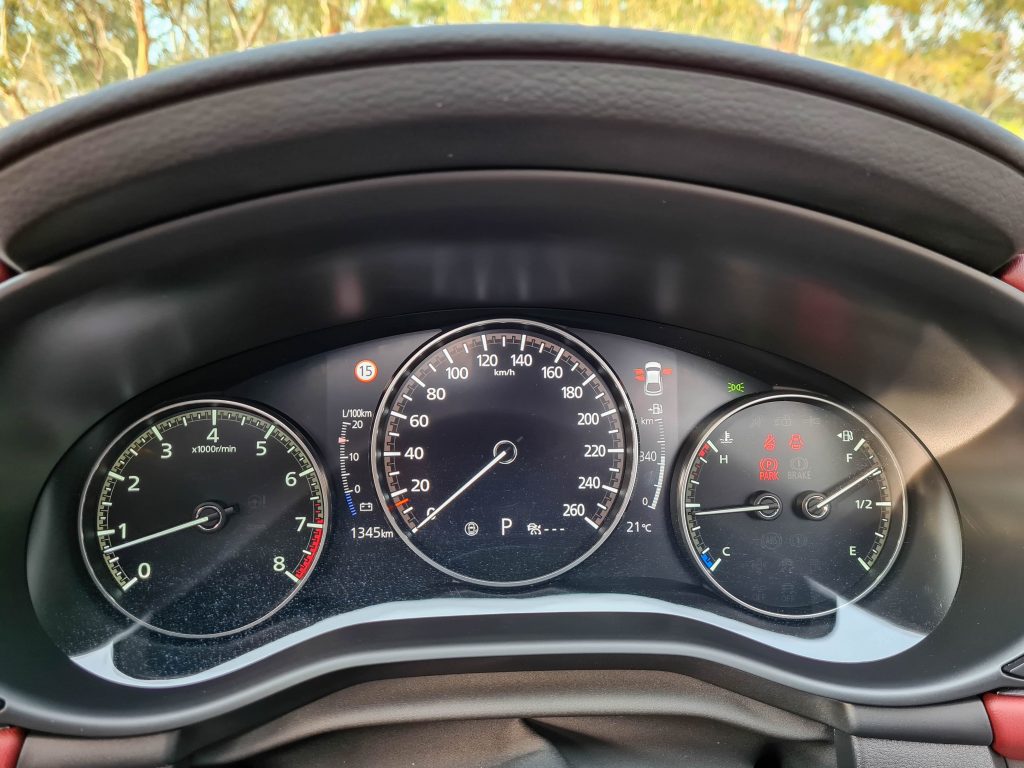
Leave a Reply